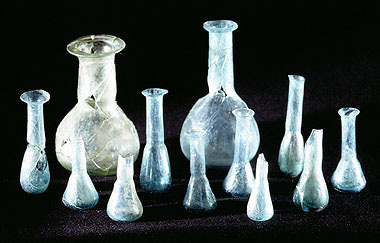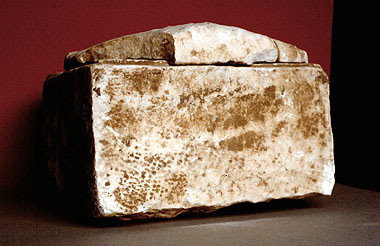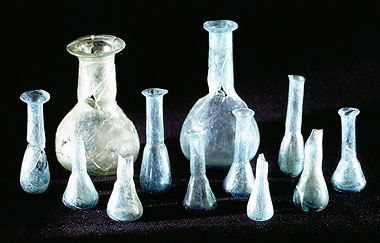Roman necropolis of Crocialetto

Information
Recommended season:
tutto l'anno
Era:
End of I century B.C. - beginning of II century A.D.
District/Location:
Pietrasanta
District:
Versilia
Contacts:
"Bruno Antonucci" Versilia Archaeological Museum


The portion of plain between Querceta and Pietrasanta is the one that best preserves traces of the 'centuriation' in a set of alignments (roads and canals) that intersect forming a grid of squares whose sides are approximately 710 metres long. Generally, nuclei of inhabited and productive settlements, together with their relative necropolis areas, were distributed along the boundaries and near to the crossroads' (Montiscendi, Cafaggio). In the place significantly called 'Crocialetto' the remains of two funerary monuments of the first Imperial Age have been discovered.
(text by Fabio Fabiani)
(text by Fabio Fabiani)
Necropoli romana di Crocialetto Pietrasanta
Remains are not visible; finds are kept at the Archeological Museum Bruno Antonucci in Pietrasanta.
The foundations of two funerary monuments, one with a large quadrangular base made of rubble and mortar, the other consisting of a pen enclosing the burial area, were discovered in 1982 following works for the construction of a sewage system.
The enclosed one had a semicircular wall closed by a straight stretch and surrounded an area inside which pits for a group of graves containing ashes had been dug in the ground. The ground had then been covered by a layer of earth and rubble, showing the level on which people trod, that was renewed at each new burial. Much disturbed in modern times, the area has returned only one complete tomb, in which the remains of a male adult had been gathered in a flat-bottomed amphora sealed by a terracotta cover. In the area a marble urn, in form of a rectangular case and with a tent-shaped cover, was also found. The many glass ointment jars, found scattered in the area, must have been part of the goods contained in women's graves.
The material collected allows us to establish that the monument, intended for the members of a same family group, was used for about a century, between the age of Augustus and the beginning of the IInd century A.D.
bibliography:
- Paribeni E., Storti S., Crocialetto (Pietrasanta), in Museo Archeologico Versiliese. Pietrasanta, Viareggio 1995
The enclosed one had a semicircular wall closed by a straight stretch and surrounded an area inside which pits for a group of graves containing ashes had been dug in the ground. The ground had then been covered by a layer of earth and rubble, showing the level on which people trod, that was renewed at each new burial. Much disturbed in modern times, the area has returned only one complete tomb, in which the remains of a male adult had been gathered in a flat-bottomed amphora sealed by a terracotta cover. In the area a marble urn, in form of a rectangular case and with a tent-shaped cover, was also found. The many glass ointment jars, found scattered in the area, must have been part of the goods contained in women's graves.
The material collected allows us to establish that the monument, intended for the members of a same family group, was used for about a century, between the age of Augustus and the beginning of the IInd century A.D.
bibliography:
- Paribeni E., Storti S., Crocialetto (Pietrasanta), in Museo Archeologico Versiliese. Pietrasanta, Viareggio 1995
- PARIBENI E., STORTI S., Crocialetto (Pietrasanta), in Museo Archeologico Versiliese. Pietrasanta, Viareggio 1995
Scopri altre attrazioni vicino a Roman necropolis of Crocialetto
See allYou may also like..
See all
0















